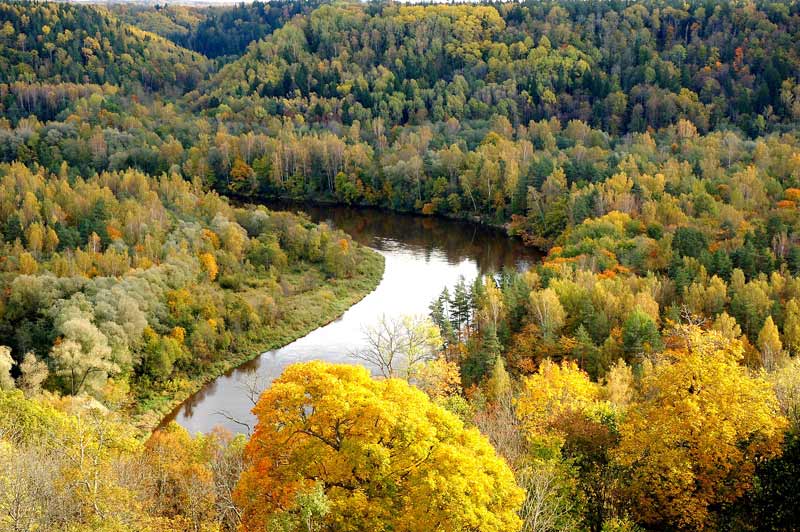Nature & Weather

Approximately 27,700 species of flora and fauna have been registered in Latvia. Common species of wildlife in Latvia include deer, wild boar, moose, lynx, bear, fox, beaver and wolves. Non-marine molluscs of Latvia include 159 species.
Latvia is shared between the Central European and Northern European provinces of the Circumboreal Region within the Boreal Kingdom. According to the WWF, the territory of Latvia belongs to the ecoregion of Sarmatic mixed forests. More than half of Latvia's territory is covered by forests, mostly Scots Pine, birch and Norway Spruce.
Being a northern country, Latvia experiences fairly long, dark winters (November to February). It is not generally extremely cold or snowy; averaging around minus ten degrees Celsius, but temperatures can reach minus twenty for a few days each year. Spring is lovely with plenty of flowers and blooming fruit trees and shrubbery. Summer is the favorite season of most Latvians because of long "white" nights and warm temperatures, averaging a pleasant 20 degrees. However, it is not unusual to have periods of temperatures around 30 degrees. Fall is popular with nature lovers due to the colorful leaves and plentiful wild mushrooms to be had in the forests. Latvia is a very lush green country for a good reason - it rains quite a lot. Be sure to bring a sturdy umbrella for year-round use, warm clothes and sturdy, waterproof boots from September to March/April.
Coastal regions, especially the western coast of Courland Peninsula, possess a more maritime climate with cooler summers and milder winters, while eastern parts exhibit a more continental climate with warmer summers and harsher winters. Daugavpils in southeastern Latvia has been the site for both the lowest and highest temperatures ever recorded.
Latvia has four pronounced seasons of near-equal length. Winter starts in mid-December and lasts until mid-March. Winters have average temperatures of −6 °C (21 °F) and are characterized by stable snow cover, bright sunshine, and short days. Severe spells of winter weather with cold winds, extreme temperatures of around −30 °C (−22 °F) and heavy snowfalls are common. Summer starts in June and lasts until August. Summers are usually warm and sunny, with cool evenings and nights. Summers have average temperatures of around 19 °C (66 °F), with extremes of 35 °C (95 °F). Spring and autumn bring fairly mild weather.